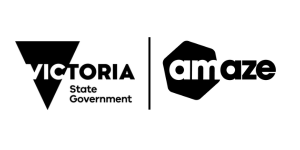Creating an autism friendly team environment
Around 1 in 100 Australians is Autistic but around 50% of Autistic people choose not to disclose their diagnosis to their employer, due to concerns of being judged and experiencing stigma or discrimination (1). Understanding how to best manage and support Autistic employees is critical to ensuring that they feel comfortable and capable to perform at their best and deliver for the organisation and their colleagues.
Below are some examples of changes you can begin to implement today as you kick-start your journey to creating an autism friendly workplace that works for everyone.
1. Be a clear communicator
Using clear, direct and concise language to communicate is a good way to convey your message or request without room for misinterpretation. Communicating clearly is just good practice, but it can be especially important for Autistic people, some of whom find sarcasm, implied requests, figurative or metaphorical language or other forms of indirect communication harder to understand. Communicate your message, task or instructions in clear and plain language, break down tasks into small steps, if required, and make sure staff know that they can ask – and feel safe asking – clarifying questions.
2. Ask the all-important question and adjust accordingly
Set your team members, yourself and your organisation up for success by asking one simple question – “What support do you need from me and the organisation to do your best work?”. A workplace adjustment is a modification to a work process, practice, procedure or setting that enables a person with a disability to perform their job in a way that minimises the impact of barriers they face at work. Removing barriers that impact upon an employee’s ability to do their best work is in everyone’s best interest, so this is helpful to apply across all employees. This might include things like providing noise cancelling headphones so that they can block out unhelpful sensory stimuli or increase their focus, or always following up verbal communication in writing with a recap of what was discussed. Everyone’s needs will be different so it’s important to have this conversation and ensure that they have the right support in place to perform at their best.
3. Allow for different communication preferences
We all have different ways that we like to communicate and receive information. While some people have communication preferences, others have an inherent need to communicate or receive information in a particular way to help them process and understand. Some Autistic people may prefer written communication over verbal communication, or to receive instructions over chat rather than via email. Ask the person what method of communication they prefer when they start and make an effort, where possible, to communicate with them in their preferred way.
4. Offer flexibility
Creating space and options to help Autistic people deal with the expected and unexpected happenings in a workday can help to build the foundations of a productive and effective working relationship. For example, your organisation may follow the traditional work schedule of a single 30-minute or 60-minute lunch break. But for some Autistic people, sticking to a single break in the day or going for long periods of time without a break can be challenging. Offering them the option to take shorter breaks at more frequent intervals throughout the day can help them to ensure they perform consistently across the day and avoid overwhelm. Offering flexible start and finish times and remote workdays are also great ways to support Autistic team members.
It’s important to remember that not all Autistic people will want flexibility, some may prefer and appreciate the predictability of a routine or a tightly defined structure. Remember, ask the question and find out what support people need to help them perform at their best.
5. Foster a welcoming and supportive team environment
Like anyone, you will always get the best from an Autistic employee when they feel supported, included and safe to speak up and ask questions. Embedding a transparent, respectful and honest culture within your team environment will allow you to tap into the unique strengths and ideas that Autistic and non-Autistic employees bring to their roles, and further nurture team collaboration.
Want a copy of these helpful tips to take with you? Download this webpage as an information sheet below.
Want further information about autism or how you can be more autism friendly in your workplace?

Gain a deeper understanding and improve your knowledge of autism
Our free ‘What is autism’ online course provides an overview of autism and includes practical knowledge and information that can support you to be more autism friendly in your day-to-day interactions. This short course will give you an understanding of what autism is, explore the importance of using strengths-based language, identify practical ways to be more autism inclusive in your interactions and behaviours, and more.
To find out more or start the online course, visit the ‘What is autism’ webpage.
Explore further and find out how you can make your workplace autism friendly
Amaze’s A-Plus Inclusion Program supports organisations to confidently and capably access the talents, fresh perspectives and unique skillsets held by Autistic people. The program focuses on the workplace environment and helps organisations to establish sustainable and neuroinclusive practices, policies and procedures. There are a variety of options to choose from to fit your organisational needs, including self-paced learning modules, workshops and training, advisory services, and more.
To find out more, visit the A-Plus Inclusion Program hub.
Need autism information or advice?
Get free expert, independent and quality autism information from our national autism helpline, Autism Connect, over phone, email or webchat. This service supports Autistic people, their families and carers, healthcare professionals, teachers and the broader community. Open from 8am to 7pm, Monday to Friday.
Call 1300 308 699, email [email protected] or connect with one of our Autism Connect Advisors on webchat.
References:
TBC – 1 in 100 reference
1. Lindsay, S., Osten, V., Rezai, M., & Bui, S. (2021). Disclosure and workplace accommodations for people with autism: A systematic review. Disability and rehabilitation, 43(5), 597-610
Funding acknowledgement
This campaign was made possible with the support of the Department of Families, Fairness and Housing.

Authorised by the Victorian Government, 1 Treasury Place, Melbourne